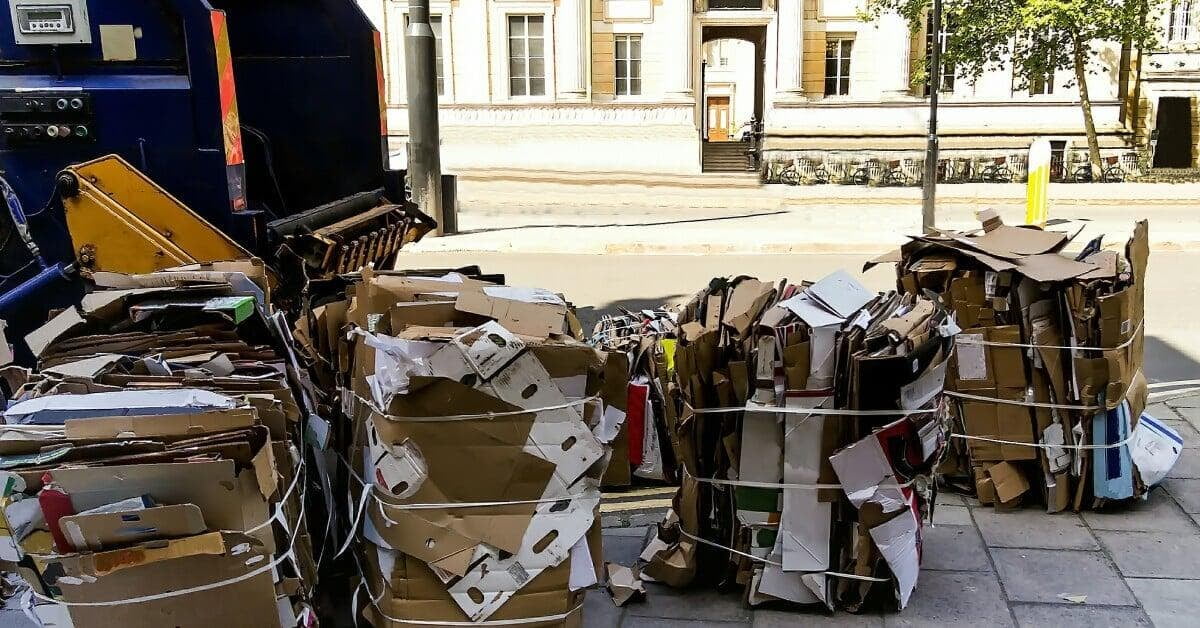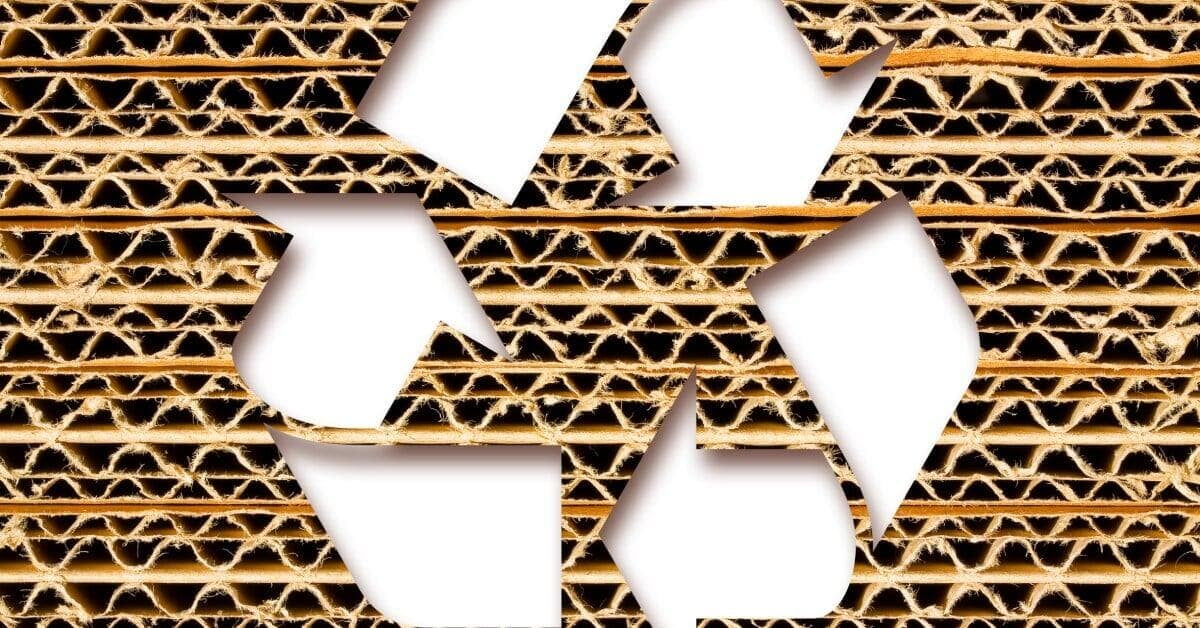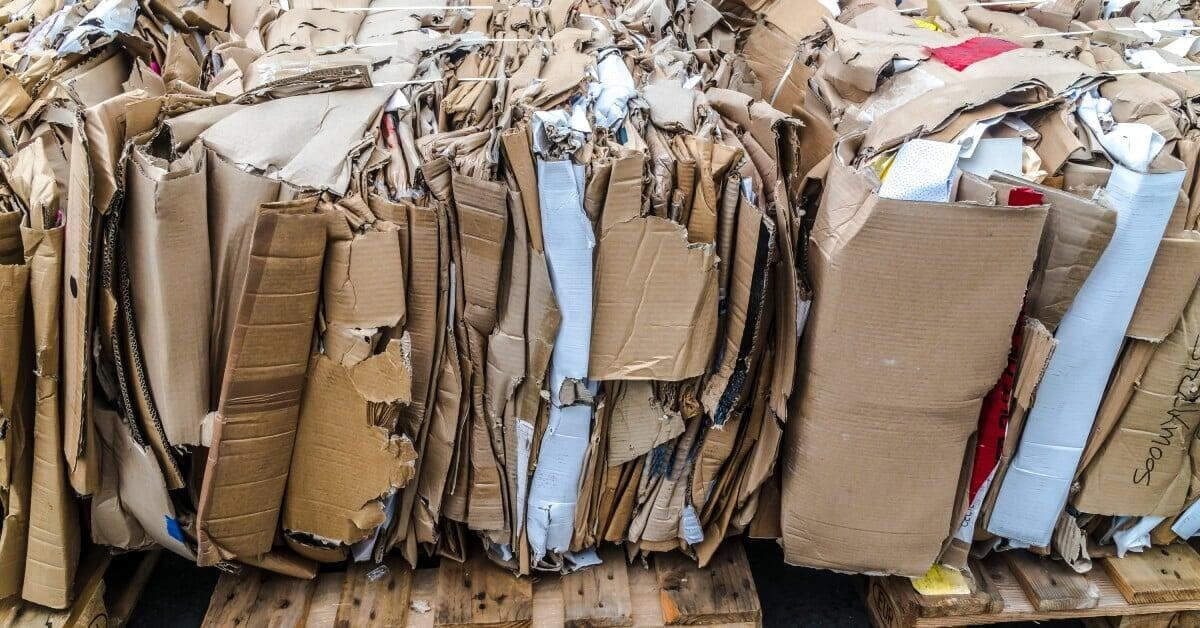
Cardboard baling is a process that involves compressing and compacting cardboard waste, corrugated material, packaging cartons, and similar items into tightly tied bundles or bales. Cardboard baling offers numerous advantages for businesses that want to manage waste more efficiently and sustainably. Explore the benefits of cardboard baling below.
Reduces Waste Volume
When cardboard is left uncompressed, it can take up a substantial amount of space, leading to inefficiencies in waste management. By baling cardboard, businesses can compact large quantities into manageable bales, significantly decreasing the overall waste volume they must deal with.
Furthermore, compacting cardboard makes handling and transporting the material more efficient. The baled cardboard is easier to move and store, allowing for smoother operations and logistics. By reducing the waste volume, cardboard balers give employees more time for other tasks.
Saves Storage Space
Loose cardboard occupies a considerable amount of room, which can be problematic for businesses with limited storage capacity. By converting loose cardboard into compact bales, companies free up valuable storage areas for other operational needs.
Having more storage space allows for better organization within facilities. Operations can run more smoothly when there is less clutter, and employees can move around more freely. In turn, this can lead to increased productivity and a more efficient working environment.
Pro Tip: Use a Vertical Cardboard Baler
A vertical cardboard baler is an effective tool for businesses with limited floor space. Its compact design allows it to fit conveniently into small areas. Stationary vertical balers are ideal for businesses with consistent waste volumes and permanent waste management areas. On the other hand, mobile vertical balers provide flexibility and convenience, as they can move to different locations as needed.

Improves Recycling Efficiency
For businesses that want to enhance their sustainability, one of the benefits of cardboard balers is that they can significantly enhance recycling efficiency. Recyclers often prefer receiving baled materials because they are easier to handle and process. With cardboard already compacted into bales, the recycling process becomes more efficient, increasing the overall recycling rate.
This streamlined process benefits both the businesses generating the waste and the recycling facilities. Businesses can take pride in contributing to a more efficient recycling system, and recyclers can process materials more quickly and effectively.
Here’s a closer look at the stages of transforming baled cardboard into new products:
- Transportation to recycling facilities: Baled cardboard is transported to recycling facilities, where its compact size makes it easier and more cost-effective to handle.
- Sorting and processing: At recycling facilities, employees sort bales by material type and quality to ensure efficient recycling.
- Pulping: The recycling center then mixes the sorted bales with water and chemicals in a pulping process to break down the fibers.
- Fiber recovery and refinement: Workers then refine the pulp to enhance fiber quality and remove impurities.
- Production of new cardboard products: The refined pulp can now become an ingredient in new cardboard products, including packaging materials, cardboard boxes, and paperboard for consumer goods.
Lowers Disposal Costs
The volume and frequency of waste collections influence disposal costs, and higher amounts of unbaled cardboard lead to more frequent pick-ups. Transportation and handling expenses also affect disposal costs. Compacted bales are more cost-efficient to transport and store.
By streamlining waste handling and processes, cardboard balers can help businesses save money on disposal. Lowering disposal costs can have a positive impact on a company’s bottom line. The business can then redirect these savings toward other important business activities or investments.

Enhances Workplace Safety
Workplace safety is a critical concern for any business, and cardboard baling can contribute to a safer working environment. Loose cardboard can create clutter and potential hazards, increasing the risk of accidents and injuries. By baling cardboard, companies can keep these materials neatly contained and reduce workplace hazards.
A tidy and organized workspace is not only safer but also more pleasant for employees. Workers can focus on their tasks without worrying about tripping over loose cardboard or dealing with inconvenient clutter. Consequently, improved workplace safety can lead to higher employee morale and job satisfaction.
Tips for Using a Cardboard Baler Safely
Cardboard balers do improve safety, but only if your employees know how to use them correctly.
Act on the following advice to reduce the risk of accidents:
- Train equipment operators. Ensure that all personnel operating the baler have received proper training on operating methods, safety protocols, and emergency shut-off procedures.
- Maintain the equipment. Perform routine maintenance checks to keep the baler in optimal working condition. This includes inspecting the machine for any signs of wear or damage, checking the hydraulic system, and ensuring that all safety guards are in place and functioning properly.
- Clear the work area. Keep the area around the baler free from obstructions and clutter. This minimizes the risk of accidents and allows operators to move around safely while managing incoming and outgoing materials.
- Use proper loading techniques. Always follow the manufacturer’s guidelines for loading cardboard into the baler. Overloading can cause jams and increase the risk of injury or equipment damage.
- Mandate personal protective equipment (PPE). Operators should wear appropriate PPE, such as safety gloves, goggles, and steel-toed boots, to protect against potential hazards during baler operation.
- Develop and enforce emergency procedures. Familiarize all operators with the baler’s emergency stop functions and procedures in case of malfunction or other urgent situations.
Contributes to Environmental Sustainability
Cardboard baling plays a role in promoting environmental sustainability. Efficient recycling through baling helps lower a business’s carbon footprint by reducing the number of trips to recycling centers. Fewer trips mean less fuel consumption and fewer emissions, supporting sustainable practices.
By adopting cardboard baling practices, businesses can demonstrate their commitment to environmental responsibility. This commitment can enhance their brand image and attract environmentally conscious customers. In doing so, companies not only contribute to a healthier planet but also position themselves as leaders in sustainability within their industry.
Cardboard baling is an effective approach for reducing waste volume, lowering waste disposal costs, and improving workplace safety. By transforming cardboard waste into compact bales, businesses can enhance their operational efficiency and lower environmental harm. Efficient recycling through baling supports sustainable practices by minimizing emissions and conserving resources. Use stationary or mobile vertical cardboard balers to reap these benefits and take up minimal floor space.
